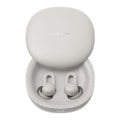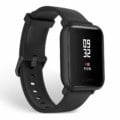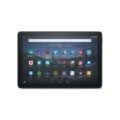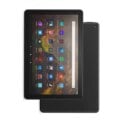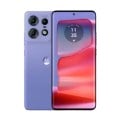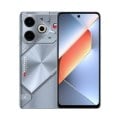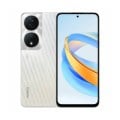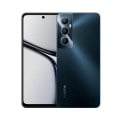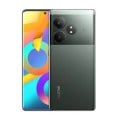Amazfit Bip 5
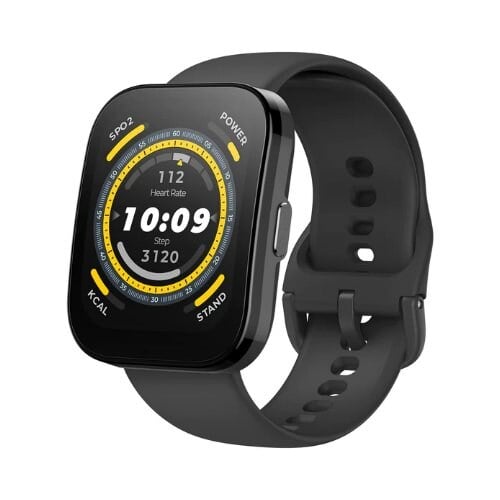

-
Processor:
-
RAM:
-
Storage:
-
Display: 1.91 Inch
-
Camera:
-
Operating System: Android, iOS
Amazfit Bip 5 has not been officially announced yet. The specs mentioned below are based on rumors.
Product Main Features:
Amazfit Bip 5 comes with an ultra-big screen 1.91 inches display. It features bluetooth phone call, fouor satellite positioning systems alongside 120+ sports modes and smart recognition. It is equipped with multiple sports modes and a heart rate monitor, which helps you track your fitness goals and monitor your health.
The smartwatch comes with sleep tracking, sedentary reminders, and notification alerts that helps the user to stay informed and motivated throughout the day. It also features waterproof design and long battery life. The dimension of the device is 45.9 x 38 x 11.2 mm and it weighs 26 grams. It comes in colors including Soft Black, Cream White, and Pastel Pink.
The display size is 1.91 inches, which provides resolution of 320 x 380 pixels. Amazfit Bip 5 is fueled with 300 mAh and it can work for 10 days while charging takes only two hours.
Amazfit Bip 5 - SPECIFICATIONS
General
-
ModelAmazfit Bip 5
-
ReleasedAugust 2023
-
StatusAvailable
Design
-
Type Design Type called form factor refers to a mobile phone's size, shape, and style as well as the layout and position of major components of phone. There are three major form factors seen in mobile phones => bar phones, folding phones and sliding phones.Bar
-
Dimensions45.9 x 38 x 11.2 mm
-
Weight26 grams
-
WaterproofNo
Display
-
Display Type Display Technology => A number of display technologies and types used in mobile phones => TFT (Thin Film Transistor), IPS (In-Place Switching), OLED (Organic Light Emitting Diode), AMOLED (Active-Matrix Organic Light-Emitting Diode), Super AMOLED (an even advanced version of AMOLED), Resistive Touchscreen (Resistive touchscreens contain two layer of conductive material with a very small gap between them which acts as a resistance), Capacitive Touchsceen (Capacitive touchscreen technology consists of a layer of glass coated with a transparent conductor)TFT
-
Size1.91 Inch
-
Resolution320 x 380 pixels
-
Touch ScreenYes
Hardware
-
Memory Card Slot Memory Card Slot is a special slot for inserting a memory card. Memory cards allow you to expand the phone's built-in memory, A memory card (sometimes called a flash memory card or a storage card) is a small storage medium used to store data such as text, pictures, audio, and video, for use on small, portable or remote computing devices such as mobile phones, mp3 players, digital cameras.No
Software
-
Operating System OS => Every computer system run on a base software called Operating System (OS). Operating System controls all basic operations of the computer (such as smartphone, PDAs, tablet computers and other handheld devices). The Operating System allows the user to install and run third party applications (apps), apps are used to add new functionality to the device.Android, iOS
Camera
-
Rear Camera Camera is able to capture photographs and usually videos, The most important characteristics of a camera are the resolution (measured in megapixels), lens focus type (fixed or automatic), higher megapixel cameras are known to capture higher quality photos, but not always a good measurement of the photos quality.No
-
ImageNo
-
VideoNo
-
Flash Flash Light => There is commonly two types of flash lights are used in camera mobile phones, LED Flash (LED flash offers lower power consumption with drive circuitry that takes up very little room, LEDs can be strobed faster than any other light source), Xenon Flash (xenon flash produces an extremely intense full-spectrum white light for a very short duration)No
-
Front CameraNo
Network
-
SIM SIM (Subscriber Identity Module) is a small card that contains mobile network subscriber's account information. This allows the phone using the card to attach to a mobile network. The SIM card is most commonly associated with GSM and UMTS mobile networks. Moving a SIM card from one phone to another allows a subscriber to switch mobile phones without having to contact their mobile network carrier. SIM cards can also be used by a phone to store limited amounts of data, such as phone numbers and text messages.Standard SIM
-
Dual SIMNo SIM
Connectivity
-
GPS GPS The Global Positioning System is a satellite-based radio navigation system, GPS permits users to determine their position, velocity and the time 24 hours a day, in all weather, anywhere in the world, In order to locate your position, your device or GPS receiver must have a clear view of the sky.Yes
-
NFC NFC (Near field communication) is a set of standards for smartphones and similar devices to establish peer-to-peer radio communications with each other by touching them together or bringing them into proximity, usually no more than a few inches.No
-
Wireless Charging Wireless Charging (Inductive Charging) uses an electromagnetic field to transfer energy between two objects. This is usually done with a charging station. Energy is sent through an inductive coupling to an electrical device, which can then use that energy to charge batteries or run the device.No
-
Headphone JackNo
Battery
-
Capacity Battery Capacity300 mAh
Media
-
Video PlaybackNo
-
Video OutNo
-
FM RadioNo
-
Ring TonesNo
-
LoudspeakerYes
-
HandsfreeNo
Data
-
4G LTE 4G LTE bandsNo
-
SpeedNo
Messaging
-
SMS SMS (Short Messaging Service) is a text messaging service component of phone, Web, or mobile communication systems. It uses standardized communications protocols to allow mobile phone devices to exchange short text messages over the networks.Yes
-
MMS MMS (Multimedia Messaging Service) is a standard way to send messages that include multimedia content (audio clips, video clips and images) to and from mobile phones over wireless networks using the WAP protocol.
-
Email Email (Electronic Mail) is a system for receiving, sending, and storing electronic messages, Similar to a letter, email is text messages that may contain files, images, or other attachments sent via the internet to a recipient by using applications and software prograps. An email address is required to receive email, and that address is unique to the user.Yes
-
IM IM (Instant Messaging) is an exchange of text messages through a software application, it enable you to create a kind of private chat room with another individual in order to communicate in real time over the Internet.Yes

